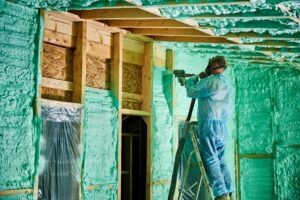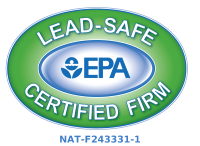Comparing Spray Foam Insulation and Fiberglass: Which is the Superior Choice?
When it comes to choosing between spray foam insulation and fiberglass insulation, the decision hinges on a nuanced analysis of various factors. Both options offer unique advantages and drawbacks, making it essential to evaluate your specific needs and priorities before determining the superior choice for your insulation project.
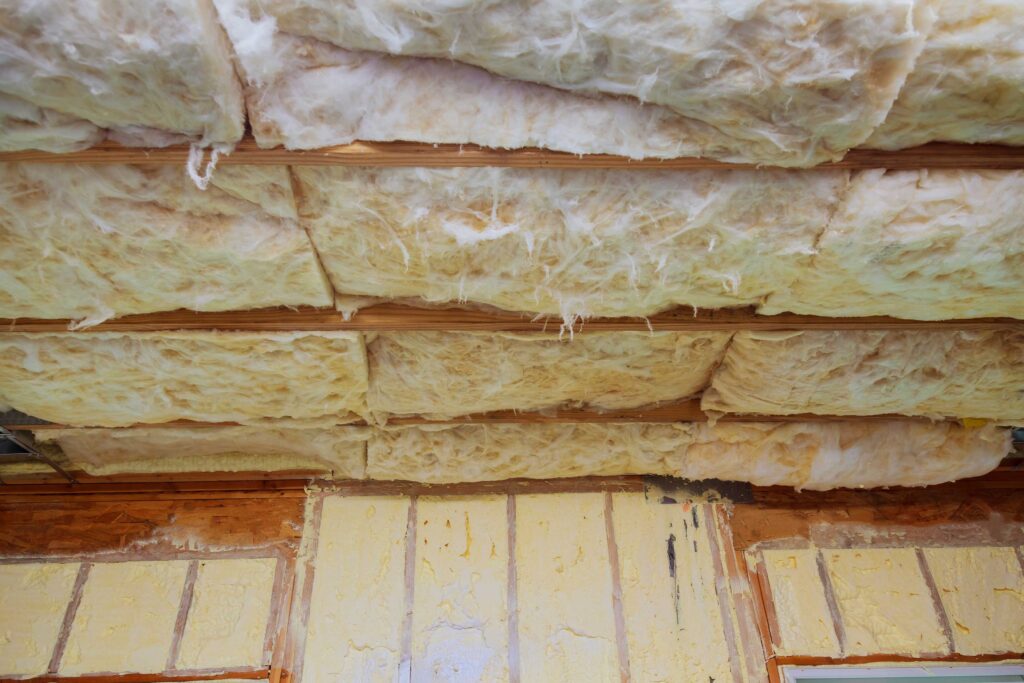
Insulation Effectiveness and R-Value:
Spray foam insulation boasts a higher R-value per inch, which means it provides better thermal resistance with thinner layers. This is particularly advantageous in areas with limited space for insulation. Fiberglass insulation, while offering decent insulation, may require thicker installations to achieve comparable R-values, potentially impacting the available interior space.
Air Sealing Capabilities:
One of the standout features of spray foam insulation is its ability to create an airtight seal. It expands upon application, filling gaps and crevices that could otherwise contribute to air leakage and energy waste. In contrast, fiberglass insulation might leave gaps during installation, allowing for potential air infiltration that diminishes its overall efficiency.
Mold and Moisture Resistance:
Spray foam insulation’s impermeable nature makes it inherently resistant to moisture and mold growth. This feature is especially valuable in areas with high humidity levels or potential water exposure. Fiberglass insulation can be susceptible to moisture-related issues, making it crucial to address proper ventilation and moisture control measures.
Installation Process and Ease:
Caution: Never attempt to install spray foam insulation on your own unless you are a certified professional.
The installation process for spray foam insulation is more complex, requiring specialized equipment and professional application. In contrast, fiberglass insulation is relatively straightforward to handle and install, making it an appealing choice for those looking for a DIY-friendly option.
Cost Considerations:
While spray foam insulation typically has higher initial costs due to professional installation and specialized equipment, its potential for long-term energy savings and improved indoor comfort can offset this investment. Fiberglass insulation’s lower upfront costs might be attractive, but its potential need for thicker installations and potential air leakage could lead to higher energy bills over time.
Environmental Considerations:
Fiberglass insulation is often praised for being a more environmentally friendly option, as it doesn’t contain as many chemicals as spray foam insulation. However, advances in spray foam formulations have led to more eco-friendly options in recent years.
Ultimately, determining the superior choice between spray foam insulation and fiberglass insulation depends on your specific needs, budget, and priorities. If airtight sealing, high R-value, and moisture resistance are paramount, spray foam insulation could be the preferred choice. However, if cost-effectiveness, ease of installation, and environmental considerations are more important, fiberglass insulation might be the better option. Consulting with insulation professionals can provide tailored insights based on your circumstances, helping you make an informed decision that aligns with your energy efficiency and comfort goals.
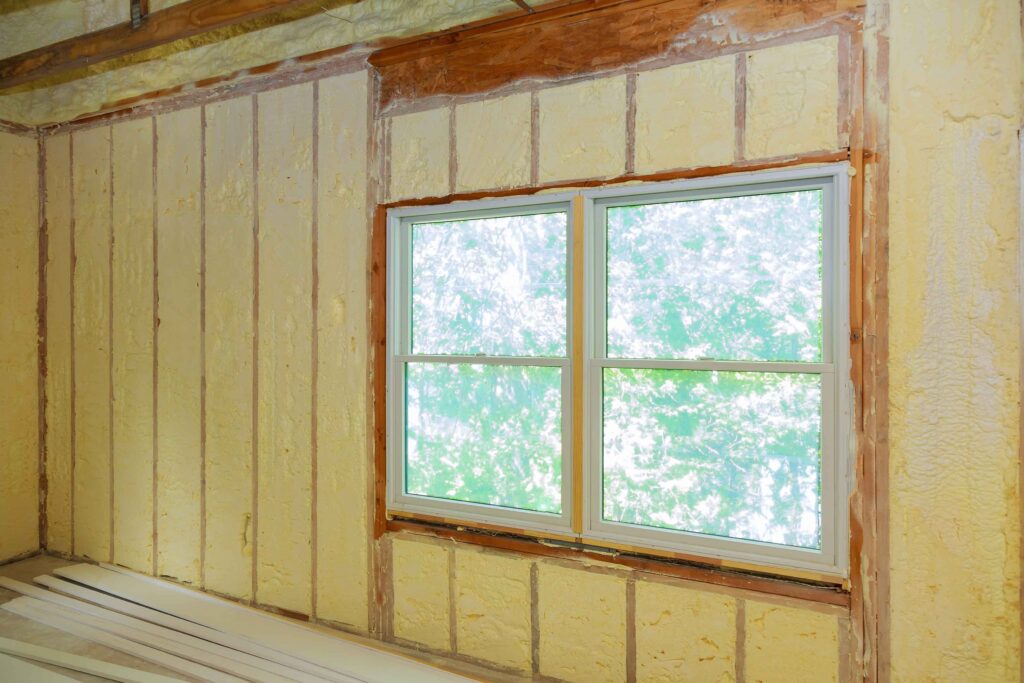
Is Spray Foam Insulation Better Than Fiberglass?
Insulating for Maximum Efficiency
Whether spray foam insulation is better than fiberglass insulation depends on your specific needs and priorities. Spray foam insulation offers superior air sealing capabilities, higher R-value per inch, and moisture resistance, making it effective in reducing energy waste, preventing air leakage, and enhancing indoor comfort. However, its higher initial cost, the need for professional installation, and potential environmental concerns due to certain formulations can be drawbacks. Fiberglass insulation, while more affordable upfront and DIY-friendly, may not provide the same level of air sealing and moisture resistance. The decision ultimately hinges on factors such as budget, insulation goals, and long-term energy savings. Consulting with insulation experts can help determine the best fit for your specific situation.
Open-Cell Spray Foam: The Breathable Insulator
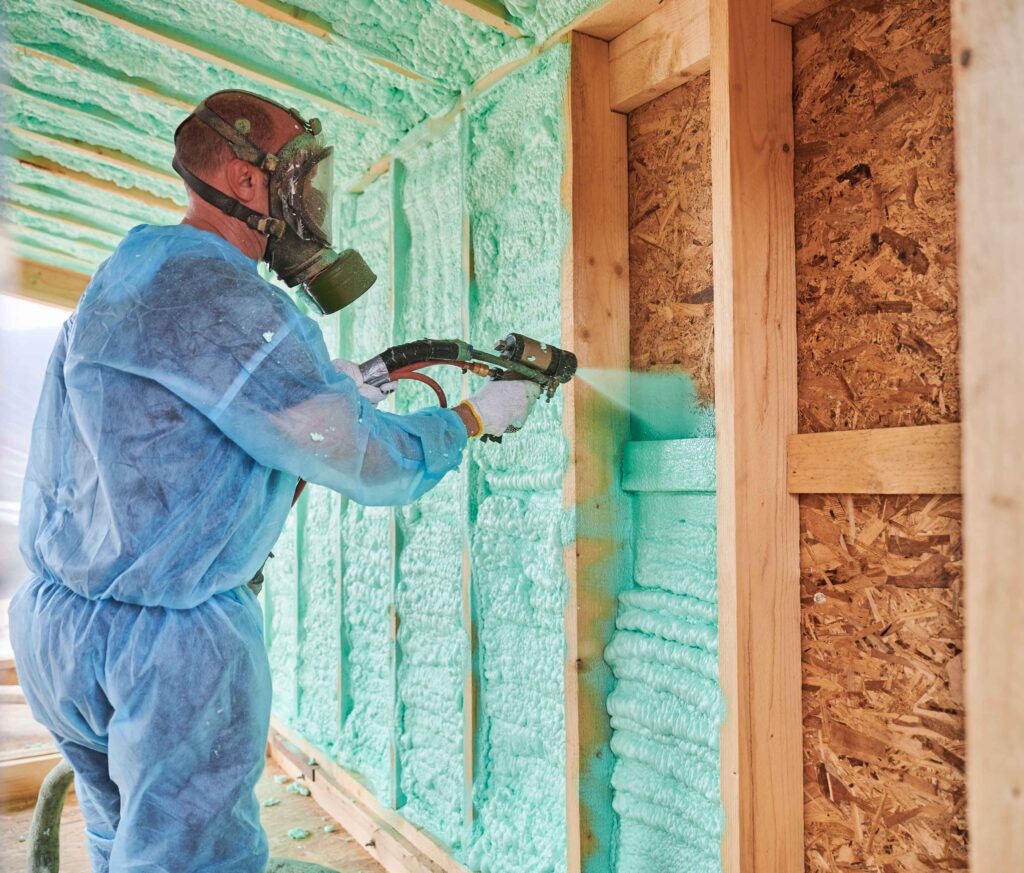
Understanding Open-Cell Spray Foam: Benefits, Drawbacks, and Ideal Applications
Open-cell spray foam insulation is a type of insulation that expands upon application, creating a spongy and flexible cellular structure. Its key advantage lies in its exceptional ability to fill irregular spaces, providing a seamless barrier against air infiltration and reducing energy waste due to drafts. This type of spray foam has a lower density, which contributes to its flexibility and sound-absorbing properties, making it ideal for reducing noise transfer within walls. However, its lower R-value compared to closed-cell spray foam means it might not be as effective in extreme temperature conditions. Open-cell spray foam’s affordability and versatility make it well-suited for applications such as interior walls, ceilings, and areas where sound insulation is paramount, while its relatively lower R-value might necessitate thicker applications for optimal thermal performance.
Foam Insulation vs. Fiberglass Cost: Making an Informed Investment
Comparing the financial aspects of spray foam insulation and fiberglass reveals a trade-off between initial costs and long-term benefits. While spray foam requires a higher upfront investment due to professional installation and specialized equipment, its superior energy efficiency, airtight seal, and durability contribute to substantial long-term savings on heating and cooling bills. In contrast, the lower initial cost of fiberglass insulation is offset by potential costs over time, as its lower R-value and susceptibility to settling might lead to decreased performance and the need for additional insulation. Ultimately, the return on investment (ROI) for spray foam insulation is strengthened by its lasting energy savings and minimal maintenance, making it a potential financial advantage over fiberglass in the long run.
Finding the Best Insulation for Specific Spaces
Choosing the Best Insulation for Roof Rafters:
When considering installing fiberglass insulation or spray foam insulation in your roof rafters, assess the space and insulation needs. Spray foam insulation, with its ability to create an airtight seal and higher R-value, excels in confined areas, offering energy efficiency while ensuring optimal thermal comfort. On the other hand, fiberglass batts, a traditional insulation material, can be a cost-effective alternative while requiring careful installation to avoid gaps.
Selecting the Right Insulation for Floor Joists in the Basement:
Selecting the insulation material for basement floor joists involves factoring in moisture resistance. Opting for closed-cell spray foam insulation can create an effective vapor barrier, preventing moisture intrusion and ensuring a dry basement environment. Fiberglass batt insulation, while a valid choice, might necessitate additional measures to address moisture concerns.
Insulating Metal Garages: Foam or Fiberglass?
Insulating metal garages present a choice between foam and fiberglass insulation. Spray foam insulation generally excels in temperature control due to its airtight seal and insulation properties, crucial for garages used as workshops or storage. However, for budget-conscious individuals, fiberglass batt insulation could offer a more economical option, although it might not provide the same level of air sealing.
Comparing the R-Value of Rockwool and Fiberglass Insulation:
When comparing insulation materials, like rock wool and fiberglass, their R-value plays a pivotal role in insulation effectiveness. Rockwool’s higher R-value variations make it a compelling option for those seeking superior thermal insulation, similar to fiberglass batts that are widely recognized for their insulation capabilities.
Is Spray Foam Worth the Cost?
As you consider the insulation materials for your project, weigh the costs and benefits. While spray foam insulation costs might be higher initially due to professional installation, its potential for long-term energy savings and enhanced insulation efficiency, along with its airtight seal and moisture resistance properties, might make it a valuable investment.
Analyzing R-Value: Spray Foam vs. Fiberglass:
Comparing spray foam insulation costs with fiberglass insulation costs involves analyzing their R-values. Spray foam’s higher R-value per inch provides efficient insulation, allowing for thinner applications. In contrast, fiberglass might require thicker installations to achieve comparable heat flow resistance.
Cellulose Insulation vs. Fiberglass: A Close Look:
When examining cellulose insulation vs. fiberglass, consider factors like insulation material and loose-fill insulation. Cellulose’s eco-friendly nature might appeal to environmentally conscious individuals, while fiberglass batt insulation provides a budget-friendly option that’s versatile in application.
Insulation Options for Flat Roofs:
For flat roofs, insulation choice is crucial for effective heat flow resistance. Closed-cell spray foam insulation in this scenario offers a seamless solution, creating an airtight barrier that guards against heat loss. It also ensures proper insulation coverage and can accommodate irregular roof surfaces.
Closed-Cell Spray Foam in the Attic: Benefits and Considerations:
Exploring insulation for the attic, closed-cell spray foam’s benefits include its ability to reinforce structural integrity due to its rigid nature. However, considering spray foam insulation costs and installation complexity is essential, as it requires a professional application to harness its benefits effectively.
Insulating Around Windows: Spray Foam vs. Fiberglass:
Deciding between spray foam and fiberglass for insulating around windows requires factoring in the insulation materials’ air-sealing capabilities. Spray foam’s airtight seal provides enhanced protection against drafts and energy loss, whereas fiberglass insulation, while cost-effective, might necessitate additional measures to ensure efficient heat flow resistance.
As you navigate insulation options using fiberglass batts, loose-fill insulation, spray foam insulation, or other materials, consider these critical factors for each scenario. By analyzing their insulation properties, installation processes, and specific needs, you can make informed choices that contribute to improved energy efficiency, comfort, and cost-effectiveness in your space.
Making the Right Choice for Your Insulation Needs
In the grand debate between spray foam insulation and fiberglass insulation, there’s no one-size-fits-all answer. The ideal choice depends on various factors including your budget, the specific area you’re insulating, and your long-term energy efficiency goals. While spray foam insulation excels in terms of air sealing and energy efficiency, fiberglass insulation offers affordability and versatility. It’s essential to weigh the pros and cons carefully and perhaps even consult with a professional before making your final decision. Whichever option you choose, investing in proper insulation is a significant step toward creating a comfortable and energy-efficient environment for your space.
Disclaimer:
The information provided in this blog is for educational purposes only and should not be considered professional advice. Always consult with a qualified expert before making any insulation decisions for your property.
Connecticut’s Experts for Spray Foam Insulation - Constitution Construction
Constitution Construction’s commitment to excellence and our dedication to quality extends to every facet of construction, including the installation of spray foam insulation. With our unwavering focus on precision and innovation, we bring you the cutting-edge solution of spray foam insulation, enhancing energy efficiency and comfort in your spaces. Our skilled team ensures meticulous installation, harnessing the power of modern technology to create airtight seals that minimize energy waste. Whether you’re looking to insulate your residential haven or elevate your commercial establishment, our expertise in installing spray foam insulation guarantees results that stand the test of time. Join us at Constitution Construction to experience the fusion of construction mastery and sustainable insulation solutions. Contact us today and embark on a journey towards a more energy-efficient and comfortable future.
For top-notch construction and insulation solutions, don’t hesitate to call us today at Constitution Construction. Our dedicated team is ready to turn your vision into reality. Whether it’s transforming your living space or optimizing energy efficiency with spray foam insulation, we’re here to make it happen. Contact us now to take the first step towards a better tomorrow.




